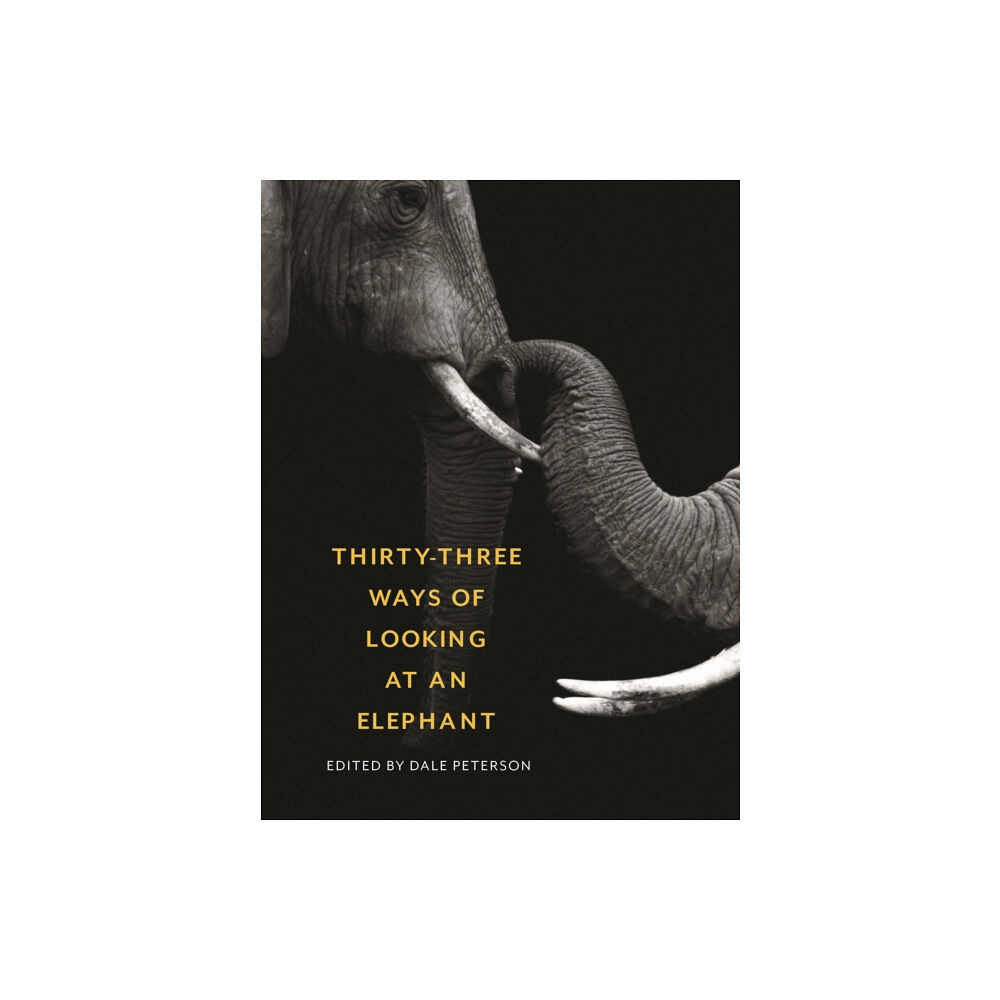- Hem
- Böcker
- Kurslitteratur
- Samhälle & Politik
- Thirty-Three Ways of Looking at an Elephant (häftad, eng)

Thirty-Three Ways of Looking at an Elephant (häftad, eng)
Elephants have captivated the human imagination for as long as they have roamed the earth, appearing in writings and cultures from thousands...
259 kr
Slut i lager
Fri frakt över 299:-
Snabb leverans
Alltid låga priser
Produktbeskrivning
Elephants have captivated the human imagination for as long as they have roamed the earth, appearing in writings and cultures from thousands of years ago and still much discussed today. In Thirty-Three Ways of Looking at an Elephant, veteran scientific writer Dale Peterson has collected thirty-three essential writings about elephants from across history, with geographical perspectives ranging from Africa and Southeast Asia to Europe and the United States.
An introductory headnote for each selection provides additional context and insights from Peterson’s substantial knowledge of elephants and natural history.
The first section of the anthology, “Cultural and Classical Elephants,” explores the earliest mentions of elephants in African mythology, Hindu theology, and Aristotle and other ancient Greek texts“Colonial and Industrial Elephants” finds elephants in the crosshairs of colonial exploitation in accounts pulled from memoirs commodifying African elephants as a source of ivory, novel targets for bloodsport, and occasional export for circuses and zoos. “Working and Performing Elephants” gives firsthand accounts of the often cruel training methods and treatment inflicted on elephants to achieve submission and obedience.
As elephants became an object of scientific curiosity in the mid-twentieth century, wildlife biologists explored elephant families and kinship, behaviors around sex and love, language and self-awareness, and enhanced communications with sound and smellThe pieces featured in “Scientific and Social Elephants” give readers a glimpse into major discoveries in elephant behaviors. “Endangered Elephants” points to the future of the elephant, whose numbers continue to be ravaged by ivory poachers. Peterson concludes with a section on literary elephants and ends on a hopeful note with the 1967 essay “Dear Elephant, Sir,” which argues for the moral imperative to save elephants as an act of redemption for their systematic abuse and mistreatment at human hands.
Essential to our understanding of this beloved creature, Thirty-Three Ways of Looking at an Elephant is a must for any elephant lover or armchair environmentalist.
An introductory headnote for each selection provides additional context and insights from Peterson’s substantial knowledge of elephants and natural history.
The first section of the anthology, “Cultural and Classical Elephants,” explores the earliest mentions of elephants in African mythology, Hindu theology, and Aristotle and other ancient Greek texts“Colonial and Industrial Elephants” finds elephants in the crosshairs of colonial exploitation in accounts pulled from memoirs commodifying African elephants as a source of ivory, novel targets for bloodsport, and occasional export for circuses and zoos. “Working and Performing Elephants” gives firsthand accounts of the often cruel training methods and treatment inflicted on elephants to achieve submission and obedience.
As elephants became an object of scientific curiosity in the mid-twentieth century, wildlife biologists explored elephant families and kinship, behaviors around sex and love, language and self-awareness, and enhanced communications with sound and smellThe pieces featured in “Scientific and Social Elephants” give readers a glimpse into major discoveries in elephant behaviors. “Endangered Elephants” points to the future of the elephant, whose numbers continue to be ravaged by ivory poachers. Peterson concludes with a section on literary elephants and ends on a hopeful note with the 1967 essay “Dear Elephant, Sir,” which argues for the moral imperative to save elephants as an act of redemption for their systematic abuse and mistreatment at human hands.
Essential to our understanding of this beloved creature, Thirty-Three Ways of Looking at an Elephant is a must for any elephant lover or armchair environmentalist.
| Format | Häftad |
| Omfång | 320 sidor |
| Språk | Engelska |
| Förlag | Trinity University Press,U.S. |
| Utgivningsdatum | 2020-12-03 |
| ISBN | 9781595348661 |
Specifikation
Böcker
- Häftad, 320, Engelska, Trinity University Press,U.S., 2020-12-03, 9781595348661
Leverans
Vi erbjuder flera smidiga leveransalternativ beroende på ditt postnummer, såsom Budbee Box, Early Bird, Instabox och DB Schenker. Vid köp över 299 kr är leveransen kostnadsfri, annars tillkommer en fraktavgift från 29 kr. Välj det alternativ som passar dig bäst för en bekväm leverans.
Betalning
Du kan betala tryggt och enkelt via Avarda med flera alternativ: Swish för snabb betalning, kortbetalning med VISA eller MasterCard, faktura med 30 dagars betalningstid, eller konto för flexibel delbetalning.
Specifikation
Böcker
- Format Häftad
- Antal sidor 320
- Språk Engelska
- Förlag Trinity University Press,U.S.
- Utgivningsdatum 2020-12-03
- ISBN 9781595348661
